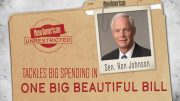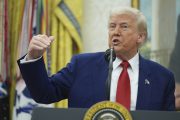
In this time of deep concern about election integrity and worries about widespread use of mail-in ballots leading to vote fraud, it is wise to look at the standards of election integrity as practiced in our nation’s founding era.
Most colonies and states in early American history felt that any form of absentee voting had too much risk of either fraud or uncertainty in the results. As such, it was rare to find a colony or state that had any provisions for absentee voting. There were a few exceptions, however, and the election procedures used in those early days to enable absentee voting had much less vulnerability than absentee or mail-in voting as practiced today.
Many records of the laws and generally accepted procedures for voting in early America have been lost due to lack of archives, but certain aspects have been discovered by researchers. One such researcher was Cortlandt F. Bishop, Ph.D., who wrote in his 1893 book History of Elections in the American Colonies:
Long before the Rhode Island charter was granted, the principle of voting by proxy was recognized at Newport, as is proved by the law of 1639-40, permitting those “necessarily detained” to send their votes, sealed up, to the judge who presided at an election. When the confederacy was organized in 1647, it was provided that “forasmuch as many be necessarily detained that cannot come to the General court of Elections that then they shall send their votes sealed up unto the said Court, which shall be as effectual as their personal appearances.” But a proviso was soon added that “None shall bringe them any voates but such as they receive from the voaters’ hands, and that all voates presented shall be filed by the recorder in the presence of the Assembly.”
It would appear that absentee ballots, somewhat like today’s absentee ballots based on excused absence, were allowed in Newport, Rhode Island, for a very short time, but the law was soon amended to require the voter to hand the ballots directly to the recorder and to require witnesses at numerous stages of the process. In no way was this form of voting supposed to be a matter of simple convenience. The voter needed to be “necessarily detained.” Very little electoral activity was done behind closed doors.
Massachusetts Colony had a similar experience to that of Rhode Island. They allowed proxy votes for reasons of sickness or necessary absence. Bishop wrote:
A system of sub-proxy like that which existed in Massachusetts seems to have been in use, for in case of sickness and necessary absence from the town meetings an elector could send his vote to a magistrate, and the latter was required to place it in the hands of the governor or the deputy governor at the court of election.
Whatever may been the meaning of the statute just quoted, an act was passed in 1715 requiring that every freeman should write his name “at length on the back side of his proxy,” and all proxies found wanting in this particular were to be thrown out when the canvas took place.
In the case of Massachusetts in 1715, the absentee voters lost their ballot secrecy for the sake of making certain that the voter could check his ballot to be sure it was not altered. It must also be noted that for a while in Massachusetts there was no ballot secrecy for any votes cast. The matter went back and forth for many years and was finally settled in 1853 with an amendment to the state constitution that guaranteed the secret ballot by means of ballot envelopes supplied by the state.
In Connecticut in 1670, voters were allowed to vote with something similar to absentee ballots, in which voters were allowed to cast their ballots in their town meetings and have the ballots sent to Hartford. These were secret ballots.
The word “proxy” in voting was soon used similar to the way it is today, i.e., the appointment of a person to act on behalf of another person.
Bishop found one other place where absentee voting was allowed in early America, and that was South Carolina.
Until a researcher finds evidence of absentee voting in other colonies in Colonial times or states in the early American period, it would appear that only in South Carolina and a few New England states was there any form any absentee voting in early America. It is apparent that the people who opposed absentee voting, even with the safeguards that were employed at that time, had some strong reasons for their views. Witness the strongly worded letter that was written by the lords proprietors to the governor of South Carolina in September of 1683 that was quoted in Bishop’s book:
Wee are informed that there are many undue practices in the choyce of members of Parliament, and that men are admitted to bring papers for others and put in their votes for them, which is utterly illegal & contrary to the custome of Parliaments & will in time, if suffered, be very mischeevious : you are therefore to take care that such practices be not suffered for the future, but every man must deliver his own vote & noe man suffered to bring the votes of another, & if sheriffs of the counties shall presume to disobey herein, you are to commissionate eight other sheriffs in their roomes.
Absentee Voting for Soldiers and Sailors in the Civil War
Laws allowing absentee voting were rare in the United States until the Civil War. One state that has good records of laws and procedures for how absentee voting was allowed for soldiers and sailors who were serving in the war is New York. New York had major newspapers that were archived and have subsequently been scanned and made available to the public.
Absentee voting was not allowed at all in New York when the Civil War broke out. During the war, in order to allow for what was frequently referred to as “soldier votes,” the state constitution had to be amended. Once the state constitution was amended, then came the debate on what manner of voting would be used. The two methods of voting for soldier votes at that time in America were voting in the camps and proxy voting, where the definition of proxy in this context meant appointing a trusted person to go to the polls and vote on another person’s behalf.
Voting in the camps is somewhat self explanatory. Because most of the army units were federalized state militias, the men serving in a particular camp were usually from the same state and the election laws were known to the men. They assembled at a prescribed date and time and conducted their elections according to their state laws. Some states had secret ballots, and some did not. When the voting was accomplished, the totals were sent to the home states of the soldiers.
After much debate in the New York State Legislature, where there were concerns raised about the integrity of voting in the camps due to the possible influence over the voting by the officers in charge, the legislature passed a law allowing soldiers and sailors to appoint proxy voters to vote for them back in their home precincts.
The following instructions from New York Secretary of State Chauncey Depew appeared in the New York Herald of October 2, 1864:
Under the provisions of the Soldiers’ Voting Bill, the soldier intending to vote at any general or special election, to be held in this State, is required to fill out and execute a power of attorney (for which a blank is herewith sent), swear to it before any field officer, captain, adjutant or commandant of any company or detachment of any detached service of the United States, any commissioned as officers in the volunteer force of the State of New York, or the captain or commandant of any vessel in the naval service of the United States; also having a witness to sign his name thereto, and authorizing some person, who is a legal voter, at his home or place of residence in this State, residing in the same town or city where such soldier resides, to cast for him his vote or ballot. He then must fill out the blank affidavit, which will be found printed on the outside of the accompanying envelope, sign it and swear to it before one of the officers above named. [Emphasis in original.]
A procedure such as this could be streamlined and used as a substitute for current absentee-ballot laws of today, which have opened the floodgates for absentee-ballot fraud.
Absentee Ballots in Modern Times
Because of a lack of archives in many jurisdictions, it is difficult to determine with certainty where the first absentee-ballot law was passed. But scanning through old newspapers, one can find accounts of absentee ballots somewhat similar to those of today in Kansas by 1912, and numerous other states by the elections of 1914.
Details regarding the Kansas absentee-ballot law were detailed in the Topeka State Journal (a newspaper, not an official government journal despite its name) in the October 29, 1914 issue:
Under the absent voter law, all persons who are necessarily absent from their home counties on election day may vote elsewhere in the state for state, district and county offices. In such case the voter should apply to the election officers of the precinct where he is temporarily stopping and there make an affidavit that is required, which sets forth the voter’s home ward or township and the nature of the duties, occupation or business by reason of which the voter is temporarily absent from his or her home county. Upon the making of this affidavit, a general ballot will be given the absent voter. The words, “duties or occupation or business” do not necessarily limit the right to vote away from home to those engaged in gainful occupations. The ancient and most honorable duties of the housewife are now among the occupations of those who can vote in Kansas. A woman engaged in any of the numerous activities of womankind has the privilege of voting away from home.
Note that women could vote in Kansas in 1914. Also note that the absence needed to be excused, and that the absentee ballots were cast in a precinct on election day.
The article also mentioned other precautions that were in place in voting by absent voters:
Before opening or canvassing the ballots of absent voters, the county commissioners should check the envelopes in which these ballots are received and which are endorsed with the voter’s name and residence with the registration list of the voter’s precinct and the votes should not be canvassed or counted unless it is first determined that the absent voter was duly registered where registration is necessary.
Other states soon followed suit, passing similar laws to allow for absentee voters. In a newspaper article in the January 1, 1915 Daily Gate City (of Keokuk, Iowa) that advocated for passage of such a law in Iowa, we find:
Minnesota, Wyoming, Kansas, North Dakota, Missouri, Illinois, Wisconsin, Nebraska, Kansas [sic], Massachusetts, and South Dakota have met this situation by passing what is commonly known as the absent voters’ law. It provides, in substance, that the voter who is compelled to be away from his legal residence on election day may visit the nearest polling place, swear to his name, residence, etc., receive a special ballot, vote it, and leave it with the election officials who later sent [sic] it to the county in which the absent voter resides to be counted there in the official canvass.
The early absentee-ballot laws had reasonable precautions to ensure election integrity. There was no such thing as no-excuse absentee voting and, if there were any ballot harvesters, they had only a minor influence on the outcomes of elections. The precinct was maintained as the fundamental building block of the voting process. As such, each ballot was counted in a place in reasonable proximity to the voter who cast it, whether by absentee or in-person on election day.
At that time, all the in-person ballots were cast and counted on election day in a precinct that was a public place where any member of the public could just walk in and observe the voting. Because the absentee ballots were few in number and processing of them was frequently done in the precinct where the public was allowed complete access to watch, the election was reasonably secure.
Universal Mail-in Balloting
Oregon became the first state to adopt universal mail-in balloting when the voters approved it in 1998. With universal mail-in balloting, a ballot is mailed to the address of entry on the voter registration list. Hopefully, if people have died or moved, the returned mail will be used to update the voter registration list.
Also, hopefully, the ballots, which spend most of their time out of the view of the public, will not be tampered with while they are behind closed doors and the signature verification will be accomplished accurately and completely.
Since Oregon initiated universal mail-in balloting, other states have joined in, with some starting universal mail-in balloting via court orders based on fear on COVID-19.
Proxy Voting Today
If legislatures are looking for a method of absentee voting that will better ensure election integrity, they should favor proxy voting over mail-in balloting.
The method of proxy voting used by the State of New York in 1864 could serve as a model for today. Any person who might have a reason for excused absence on election day could start contacting friends and relatives for a person who could be trusted to cast a vote as requested. The state law could also set a limit to the number of proxy votes any one individual could cast. This would discourage, at least to some degree, anything similar to ballot harvesting as it is practiced today,
Current laws that restrict the public from walking into voting locations and observing the process should repealed, and the precinct should once again be reinstated as a public place with full access for the public to walk in and observe the election, including the vote count, without any hindrances and have all precinct election results made public immediately, even before sending them to the accumulation center.
Proxy voting as a replacement for absentee balloting could also be used, along with efficiency improvements in the processing of voters at the polls, to eventually reinstate election day as the one day of voting and get the votes once again cast at the precinct in public. We’ve moved too much of our elections behind closed doors and it’s time to reopen the process.




